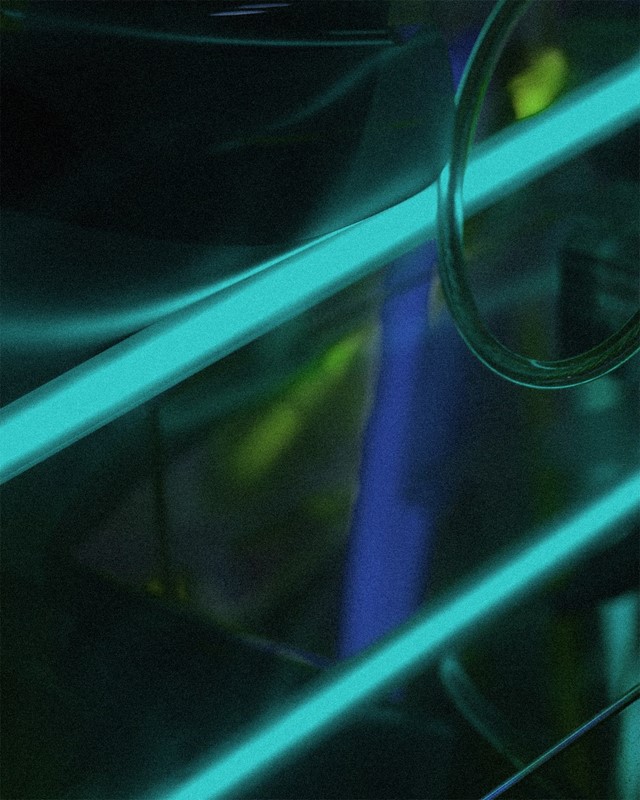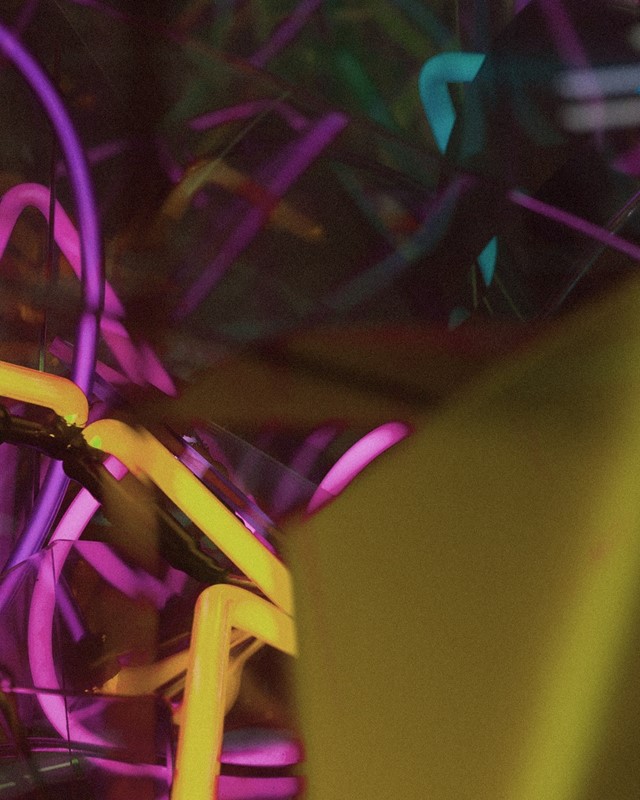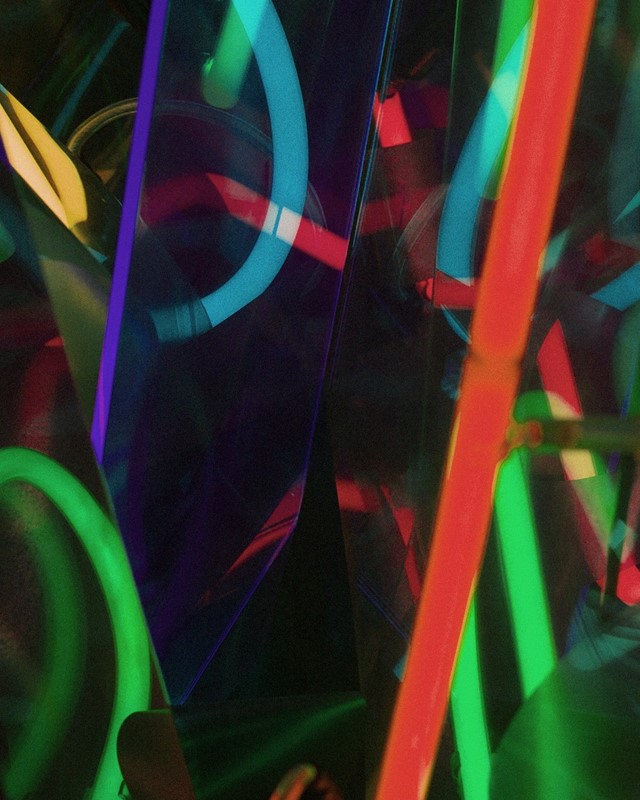From Las Vegas’ blinking strip to Dan Flavin’s vibrant sculptures, neon has long held a precious place in modern society’s consumerist core, writes Ana Kinsella
Drive north away from the chaos of the Las Vegas Strip and you will find the Neon Museum, a gallery on a two-acre site which houses over 200 forgotten neon signs from the city’s last century. Visitors can walk around the boneyard and even pose for wedding photos amongst signs for Lady Luck and the Palms Casino Resort. The Strip itself is now dominated by giant LED screens – more adaptable and cost-effective – and the art of neon bending is in danger of dying out, with little demand for new bucking cowboys or waving showgirls.
But neon light is still central to our ideas of the city, both in Las Vegas and in the abstract. Neon, of course, is a type of light and not a colour in and of itself. Named for neon gas, which produces that distinctive red-orange light, we tend now to refer to many kinds of fluorescent lighting as neon, as well as the colours associated with them. The sizzle of ‘Girls, Girls, Girls!’ signs in a red light district, or the signature red and blue of New York’s Radio City, or even the jaunty squiggle of green lettuce in the middle of a neon burger: regardless of what’s being advertised, there’s a romantic quality to their lit-up insistence.
And the actions that accompany them become symbolic, too. Think of driving alone at night, or the potential of the dancefloor. In the movie that plays on repeat in our mind, the one where we’re the hero and where things tend to go our way, it’s neon that lights up our journey.

Architecture
It was a lifelong love of neon that led postmodernist architect Denise Scott Brown to her seminal studies of Las Vegas. Likening her early childhood memories of neon lights to a kind of “fairyland”, she brought groups of her Yale students to the city to explore its form. There they found joy and significance in the city’s landscape and its neon signs, culminating in Learning from Las Vegas. The book changed the way we think about how urban spaces work, but in the years since, neon has become fundamental to the city at night.
For today’s urban dwellers, it can be hard to imagine nighttime as a time of absolute darkness, both physical and metaphorical. Times Square and Piccadilly Circus are memorials to their city’s insomnia. And neon’s early incarnation was as a way for companies and shops to continue advertising after the sun goes down, hence why it’s so often crucial to visions of urban dystopia on screen. The Los Angeles of the Blade Runner films functions as a giant permanent billboard, where neon signs couple with moving image to project an atmosphere of absolute consumerism on to the citizens below.
Art
For many who grew up in the years following the arrival of the YBAs, neon is fundamental to our very concept of modern art. But 35 years before Tracey Emin could bend neon bars to her will, Dan Flavin had to rework fluorescent light into something a gallery might view as acceptable. The New York Times likened his move to the arrival of Marcel Duchamp’s ready-mades, in terms of taking the familiar and making it new again in a gallery context. Flavin’s neon bars give off a romantic, almost surreal aspect, echoed later in Emin’s handwritten confessions of love and intimacy, and turned into an art-world sensation by the likes of Olafur Eliasson and James Turrell. But look backwards again and you’ll see neon’s invisible presence in the work of Edward Hopper, whose shopfronts and diners are lit even in the darkest of nights, providing solace for the lonely souls within.

Film
Neon lights look good on the cinema scene. Director Nicolas Winding Refn knows this, and channels the already-existing cultural perception of neon as anonymous and seedy in much of his work. In Godfrey Reggio’s cult documentary masterpiece Koyaanisqatsi, neon is simply a seam in the urban fabric; in one memorable scene, six bouffanted ladies pose in front of flashing neon casino lights. Elsewhere in the film, neon signs on buildings become fixed stars in high-speed timelapse shots of traffic at night. Those images were then repurposed in Grace Jones’s video for Pull Up to the Bumper to convey movement and speed in the city at night in its infinite possibilities.
But neon has permeated beyond the cinema screen. Today it’s the dominant lighting trend in music videos, the dreamlike pinks and purples of Ariana Grande’s Side to Side, or Justin Bieber’s What Do You Mean. This was mimicked in the San Junipero episode of Black Mirror, where the gaudily-lit Saturday night dancefloor becomes a metaphor for infinity. When set to music, neon is shorthand for nightlife, the mood of the dancefloor, an easy way to conjure up feelings that are transient and that are inevitably gone by the time we reach the cold and lonely light of Sunday morning.
